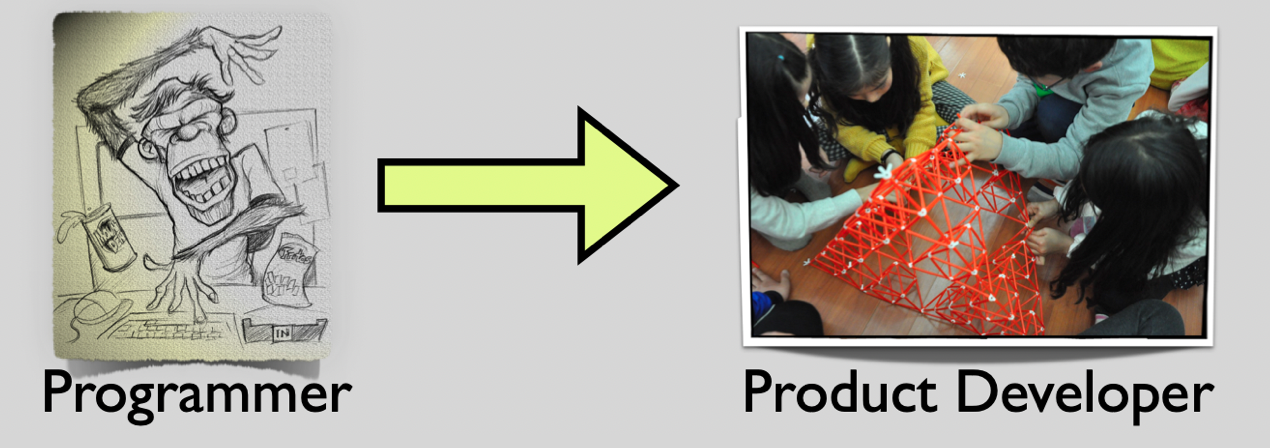The Rise Of The Product Developers - Part II, Critical Thinking

In the first part of the Rise of Product Developers series, we explored how Product Developers focus on the domain and users’ problems to build a product. The true value developers bring lies in their critical assessment of what and how they’re building. This approach has always been essential, but it’s become more clear now than ever as AI’s capacity to generate code continues to advance. Because of this mindset, Product Developers refer to Product Backlog Items as hypotheses.
Questioning the Why
In a Product Backlog Refinement Workshop, a conversation unfolds between the Product Developers and a Product Manager:
Product Manager: “We need pagination.”
Product Developers: “What problem are we trying to solve?”
Product Manager: “The page loads too slowly, and I think we’re losing users because of that.”
Questioning the Why So
Product Developer 1: “I can look at how many people are leaving the page without doing anything.”
Product Developer 2: “Could we simplify the process by showing only recent events?”
If they decide to investigate the first idea, they’ll need observability within the product. Observability has increasingly become a high-priority feature, which is an overarching strategy that encompasses various aspects such as instrumentation (product feature that allows monitor and measuring behavior) and testability (making sure that the designs are friendly to effective testing). Enhanced observability equips Product Developers with the means to accurately evaluate both the value and functionality of the product. As the series continues, we will explore how they also depend on observability to retain knowledge.
Shared Requirements Discovery - Think Critically Together
The responsibility of requirements discovery is not exlusive to certain roles. Product Developers clearly play crucial roles in this process.
Product Manager: “That’s true, but a user has said they’ll pay a million dollars if we implement pagination.”
Product Developers: “Is it worth adding complexity for that? Could we determine if displaying only recent events would satisfy them?”
Questioning the Why Now
Product Developers: (to the Product Owner) “Why are we fine-tuning the UI now? We haven’t had many users yet.”
Product Owner: “This user is the key to attracting more users. We need to ensure they’re satisfied.”
Questioning the Functionality (What)
Product Manager: “Perhaps showing only recent events might work.”
Product Developers: “Can you give us an example?”
User: “Sure, for instance, show only the 5 most recent events if there are many.”
Product Developers: “Like this?”
Scenario: Show only recent events when there are too many past events Given there were 3 events 3 days ago And there were 3 events 2 days ago And there were 3 events 1 day ago Then I should see only 5 recent events within 2 days in the past event list
User: “Yes, that looks good.”
Using techniques like Specification by Example, Product Developers and users bridge the communication gap with less ambiguity. If also helps them to define the scope of the work critically.
Questioning the Solution (How)
Product Developer 1: “We should generalize this functionality because more listing requirements will likely emerge.”
Product Developer 2: “YAGNI, let’s keep it simple for now.”
Product Developer 3: “How do we know we are done?”
Product Developer 1: “We write the test first.”
Product Developer 2: “And we also test later to uncover unexpected side effects and bugs.” (try to prove what we did is wrong)
Think about mantainability critically
While the world marvels at AI’s ability to pass the Turing Test, Product Developers understand the challenges it poses for passing Regression Tests in product maintenance.
In traditional organizations, the worth of an initiative is justified through logical reasoning and often isn’t questioned. However, even logically sound ideas need to be treated as hypotheses, given the variables of feasibility, the impact on the existing product, and the actual outcome.
Conclusion
Product Developers not only play a role in implementation and maintenance but also shoulder the responsibility of critically evaluating and validating assumptions while preserving key knowledge. An integral part of their contribution is the continuous improvement of their process through their critical thinking skills. However, this trait of constantly refining processes isn’t unique to them alone, which is why it wasn’t highlighted in the examples.
By fostering informed decision-making within the organization, Product Developers play a pivotal role in ensuring the success of the products they develop. In practice, validation and knowledge preservation often go hand-in-hand. In the next installment of this series, we’ll delve deeper into another crucial aspect of Product Developers’ accountability: learning and preservation.

